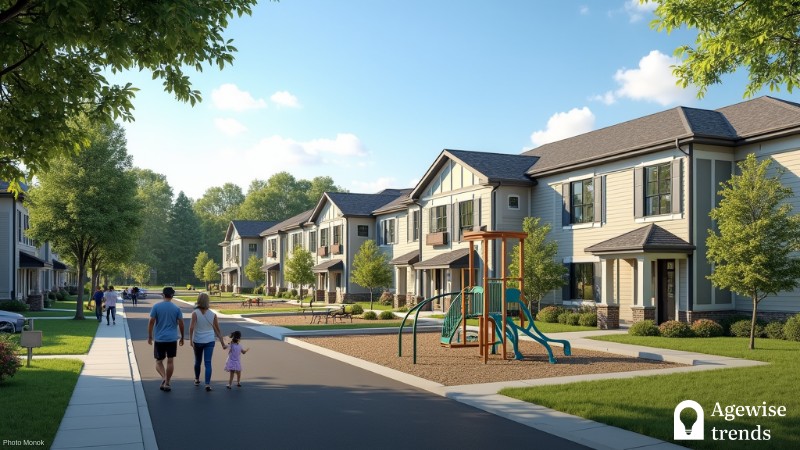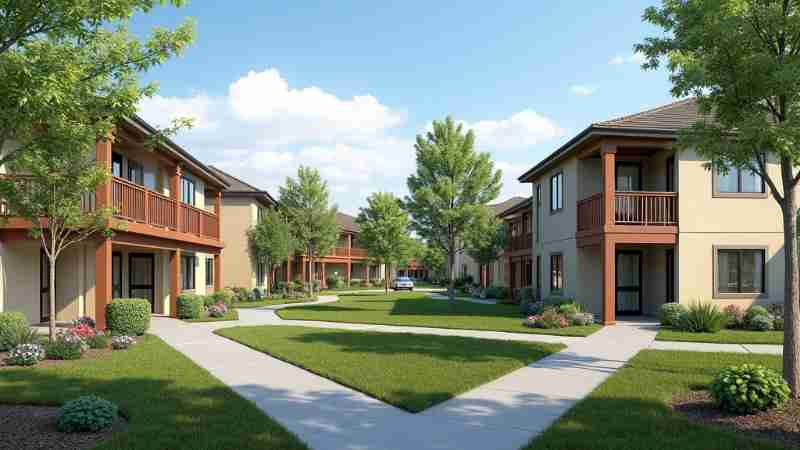In recent years, Brookfield has experienced a significant transformation in its housing development, with a strong focus on affordability to support its growing and diverse community. This shift reflects broader national discussions on housing accessibility and economic sustainability.
As the cost of living continues to rise across the country, many cities and towns struggle to find solutions that balance growth with affordability.
However, Brookfield has taken a proactive approach, implementing strategies to ensure that residents of various income levels can find suitable housing. By prioritizing affordability, the town is not only addressing immediate housing needs but also fostering long-term economic stability and inclusivity.
Brookfield’s efforts serve as a model for other communities striving to create sustainable and accessible housing options while managing urban expansion and economic challenges effectively.
Key Takeaways
Brookfield has revamped its housing development by emphasizing affordability, setting a template that other communities can follow.
- Brookfield added 351 affordable housing units, which now represent about 5.4% of its total inventory.
- Mixed-use projects and financial assistance programs have played a key role in transitioning market-rate projects into fully affordable housing.
- Income-based senior housing options are expanding to better serve low-income seniors and residents with disabilities.
The Evolution of Affordable housing in Brookfield
The economic landscape of Brookfield shifted notably after the completion of the Route 7 Bypass, paving the way for new commercial and residential projects. This infrastructural development created an opportunity for city planners to reconsider zoning laws and introduce mixed-use projects that blend residential and commercial spaces seamlessly.
One of the most notable projects to emerge from this shift is the Laurel Hill development. Initially conceived as a mix of market-rate and incentivized apartments, it eventually transformed into a fully affordable housing initiative. This transition was facilitated through financial assistance programs such as the State of Connecticut’s Competitive Housing Assistance for Multifamily Properties (CHAMP), which enabled developers to allocate more units to low-income residents.
Brookfield has made significant strides in increasing the availability of affordable housing units. The Partnership for Strong Communities reports that the town has expanded its supply by 351 units, making up around 5.4% of its overall housing inventory. While this increase marks progress, demand for affordable housing continues to outpace supply, highlighting an ongoing challenge for local policymakers.
Despite these advancements, the development of affordable housing has sparked mixed reactions within the community. Some residents support the initiatives, recognizing the benefits of a more inclusive housing market. Others express concerns about potential strains on public resources, including schools, emergency services, and infrastructure.
Balancing Growth with Community needs
A significant point of contention within the community has been the potential impact on the local school system. With the influx of new families moving into affordable housing units, concerns have arisen regarding increased student enrollment and the strain it could place on educational resources. However, some experts argue that a growing population can lead to a more robust local economy, benefiting schools through higher tax revenues.
Brookfield’s population has grown by 6.5% between 2010 and 2020, a trend reflected in the town’s financial landscape. Property tax revenues increased from $57 million in 2015 to $68.3 million by 2021, illustrating how a growing community can contribute to the town’s economic stability. Local businesses have also seen a boost, as more residents translate to increased customer bases and greater demand for services.
The town’s planning efforts extend beyond residential spaces, incorporating commercial expansions to support the evolving community. Plans for new grocery stores, healthcare facilities, and small businesses in the Four Corners district aim to create a vibrant and accessible neighborhood for both new and long-term residents.
While economic growth presents opportunities, some community members remain skeptical about the rapid pace of development. Concerns over increased population density and potential congestion have fueled debates about the long-term sustainability of these initiatives. Emergency services and public infrastructure face higher demands, prompting discussions on how best to allocate resources to maintain the town’s quality of life.
Brookfield’s affordable housing focus
Brookfield’s approach to affordable housing also considers the needs of its aging population. The demand for low income housing for seniors and disabled has grown as more retirees seek affordable living options in familiar communities. These developments ensure that elderly residents can access comfortable and cost-effective housing without being displaced due to rising costs.
The increasing need for senior affordable housing has prompted the town to implement initiatives specifically tailored to this demographic, including the creation of low income elderly apartments and senior apartments affordable for those with limited financial resources.
Sustainable growth and local authority
Brookfield continues to navigate the complexities of affordable housing by adapting zoning laws and leveraging state financial assistance programs. However, there is an ongoing debate about the extent to which state regulations should influence local housing policies. Some town officials argue that excessive state intervention could limit their ability to tailor solutions to the unique needs of the community.
Concerns about housing for low-income seniors and disabled residents have sparked discussions on expanding services specifically designed for this group. As the town explores further housing initiatives, maintaining autonomy in decision-making remains a priority for many local leaders. The ability to craft policies that align with the town’s character and economic landscape is a key consideration moving forward.
Governor Ned Lamont’s stance on expanding the taxpayer base rather than raising taxes aligns with Brookfield’s approach to development. By increasing the availability of affordable housing, the town attracts a broader population, stimulating economic growth without imposing additional financial burdens on existing residents.
Brookfield’s experience serves as a case study in balancing development with community preservation. By embracing mixed-use projects, investing in essential services, and fostering inclusive housing policies, the town demonstrates how municipalities can address housing challenges while maintaining their unique identities.
As apartment senior living options expand near Laurel Hill and other key areas, Brookfield stands at a crossroads of progress and tradition. The town’s ability to manage growth while preserving its character will determine the long-term success of its affordable housing initiatives.
Income-Based Senior Housing: Affordable living
Income-based senior housing is a vital solution for older adults with limited financial resources. These housing options, often subsidized by government programs or non-profit organizations, ensure affordability by capping rent at approximately 30% of a resident’s income. This financial relief allows seniors to maintain their independence while living comfortably on a fixed budget.
Beyond affordability, these communities offer a supportive and engaging environment. Many income-based senior housing facilities, including low income senior homes, provide communal dining areas, fitness centers, and organized social activities, fostering a strong sense of community. Social engagement is essential for seniors, as it helps combat loneliness and isolation, contributing to better mental and emotional well-being.
Additionally, some housing options, such as housing for elderly low income residents, provide on-site support services, such as assistance with daily activities, housekeeping, and transportation. These services enable seniors to live more comfortably and safely while reducing the burden of daily responsibilities. In some cases, healthcare resources are available within the community, providing essential medical support without requiring seniors to leave their residence.
By prioritizing accessibility and affordability, income-based senior housing ensures that all older adults, regardless of financial constraints, have access to safe and stable living environments. This not only enhances their quality of life but also supports their long-term health and well-being. As the senior population continues to grow, expanding and improving these housing options will be crucial in meeting the increasing demand for affordable, supportive living solutions.
For seniors facing financial limitations, income-based housing offers more than just a place to live—it provides security, dignity, and a thriving community where they can age comfortably and with peace of mind.
The broader conversation surrounding housing policies and regulatory frameworks continues to evolve, but Brookfield remains a compelling example of how local autonomy can drive sustainable and inclusive development. With careful planning and community engagement, the town is poised to navigate future challenges while fostering a dynamic and resilient housing landscape.














